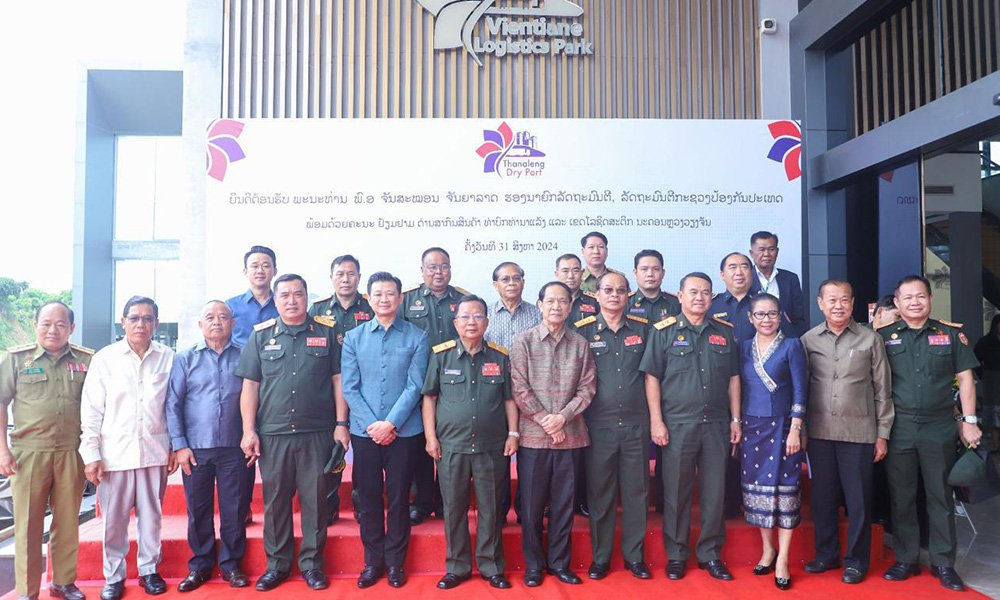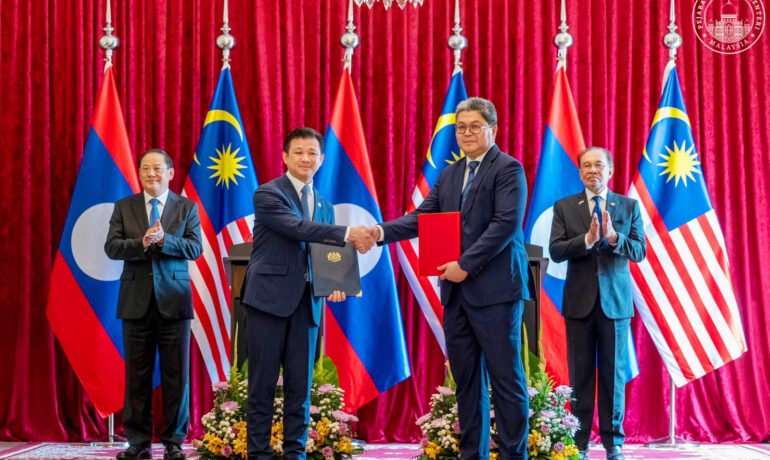Deputy Prime Minister and Minister of National Defence, General Chansamone Chanyalath, on Saturday visited the Vientiane Logistics Park and Thanaleng Dry Port, Laos’ integrated logistics centre in Hadxaifong district, Vientiane.
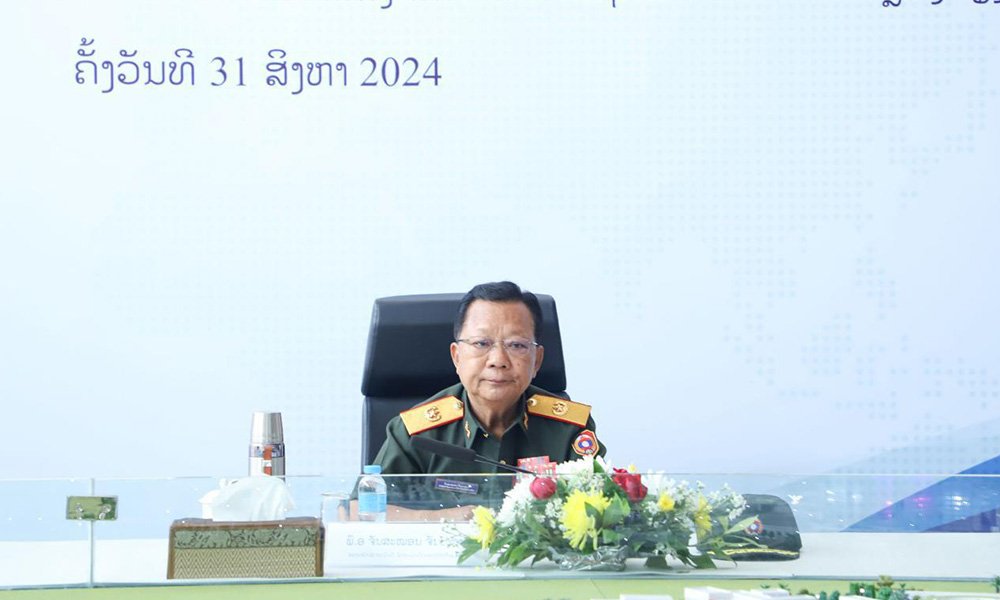
Welcoming the General and his entourage, the President of Vientiane Logistics Park Co., Ltd., Dr Chanthone Sitthixay, briefed the group on the US$727 million project, which is part of the Lao Logistics Link (LLL) designed to bolster the government’s efforts to transform landlocked Laos into a land link country.
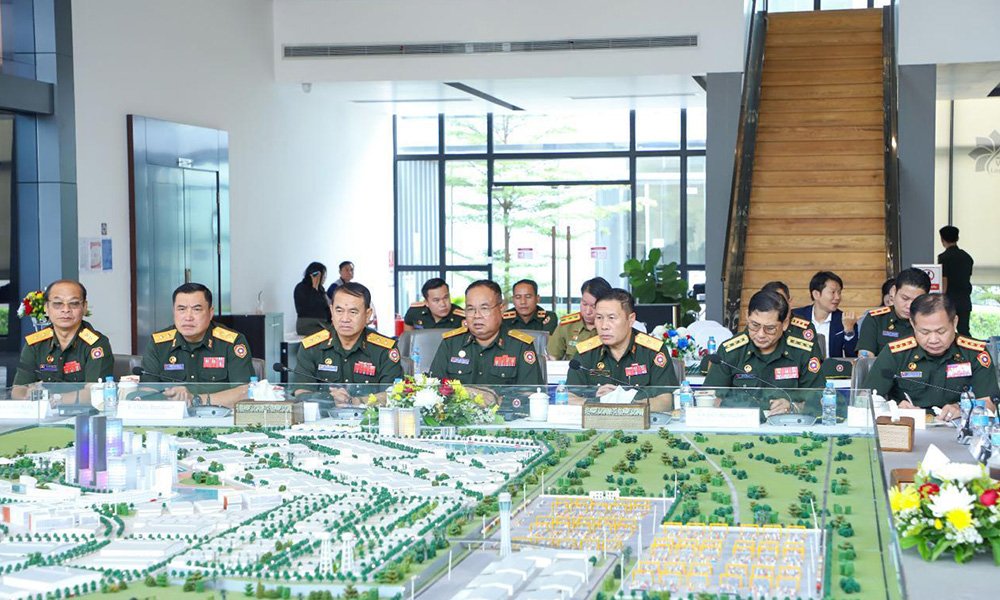
The government has given the green light to the Lao conglomerate PTL Holding Co., Ltd., the parent company of Vientiane Logistics Park Co., Ltd., to partner with the Lao and Vietnamese governments to develop and operate the LLL.

This landmark project includes the Vung Ang seaport in Vietnam’s central Ha Tinh province, a planned 540-km railway linking the seaport to the Thanaleng Dry Port, and a planned logistics park in central Khammuan province through which the railway will pass.
Dr Chanthone, who is also the Chairman of PTL Holding Co., Ltd., told the guests his company plans to build another logistics park in the central province of Borikhamxay, leveraging its strategic location linking Vientiane with Khammuan and seamlessly connecting the three logistics parks with the seaport in Vietnam.

Opening for service in December 2021, the Thanaleng Dry Port, the country’s international cargo terminal, houses a large container yard where containers arriving on trains on the standard-gauge Laos-China Railway can be transloaded onto trains using the one-metre-gauge Laos-Thailand Railway, creating ‘a super seamless connector’ route between China and Southeast Asia and unlocking Laos’ potential to become an important logistics connector in the region and beyond.
In July this year, the ASEAN Express – a freight train system linking Malaysia to Thailand, Laos and Chongqing in China – completed its first round trip after departing Selangor in Malaysia on June 27, taking just nine days for a one-way journey compared to 14 to 21 days by sea, resulting in approximately 20 percent cost savings.
Thanks to cost effective services, rail transport has bolstered competitiveness and offered an incentivising trade option.
In 2023, the volume of freight transported on the Laos-China Railway, part of the broader Belt and Road Initiative, rose to 4.089 million tonnes, a year-on-year increase of 83.1 percent, according to the Laos-China Railway company.

Through the rail route connecting with the China-Europe rail network, freight dispatched from Southeast Asia can reach European markets in 14-21 days.
In another direction, through the Vung Ang Seaport, cargo can reach markets in southern China, Japan, the Republic of Korea, Taiwan, Russia and more.
The dry port developer said the shipment of cargo from Thailand’s Issan region and Laos to these markets through the seaport is the shortest and very cost-effective route.
To tap the growing interconnection potential, the Lao investor is also turning 327 hectares of infertile land near the first Mekong Friendship Bridge, which connects Laos and Thailand, into industrial and trade zones under the name of the logistics park. The US$547 million project includes a plant and animal quarantine facility, a tank farm, export processing zone, logistics park, free trade zone, and technology hub, and gold extraction and processing plant.
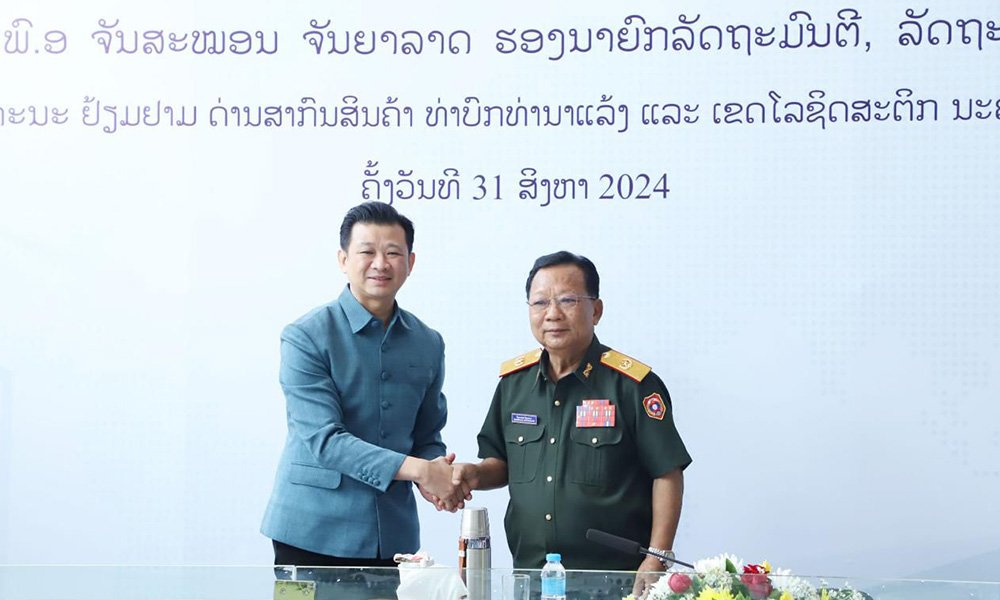
ປະກອບສ່ວນອຸປະຖຳ ກອງປະຊຸມໃຫຍ່ ຜູ້ແທນ ອົງຄະນະພັກ ກະຊວງ ໂຍທາທິການ ແລະ ຂົນສົ່ງ ຄັ້ງທີ VI
ໃນວັນທີ 19 ກັນຍາ 2025 ທີ່ຜ່ານມາ, ກຸ່ມບໍລິສັດ ສິດທິໂລຈິສຕິກ ລາວ ຈຳກັດ,
ລາວ ແລະ ມາເລເຊຍ ໄດ້ເປີດຕົວເສັ້ນທາງ ການຄ້າທາງລົດໄຟ-ທະເລ ແຫ່ງໃໝ່
ລາວ ແລະ ມາເລເຊຍ ໄດ້ເປີດຕົວເສັ້ນທາງ ການຄ້າທາງລົດໄຟ-ທະເລ ແຫ່ງໃໝ່ ເພື່ອເສີມສ້າງລະບົບການຂົນສົ່ງໃນພາກພື້ນ, ສົ່ງເສີມການຮ່ວມມືທາງເສດຖະກິດ, ແລະ

